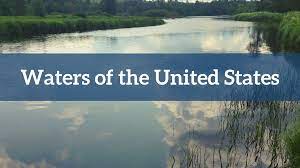The administration’s replacement of NWPR means cattle producers must once again deal with regulatory uncertainly and the potential for government overreach.
FORT WORTH, Texas — The Texas & Southwestern Cattle Raisers Association earlier this week joined the National Cattlemen’s Beef Association and 47 other cattle organizations in submitting an amicus curiae brief to the U.S. Supreme Court in the case of Sackett v. EPA. The brief asks that the nation’s highest court adopt a limited and clear definition of the Waters of the United States (WOTUS).
The case will answer the question of whether the Ninth Circuit Court set forth the proper test to determine whether wetlands are “waters of the United States” under the Clean Water Act. It will also clarify the Environmental Protection Agency’s authority under the Clean Water Act and have broad implications for the Biden administration’s efforts to redefine what water features can be federally regulated.
In 2015, the Obama administration enacted its WOTUS rule. This vastly overreaching rule would have gone so far to regulate stock ponds and ditches that only flow after heavy rainfall. Fortunately, it was replaced with the more sensible Navigable Waters Protection Rule, NWPR, in 2020. That rule set clear and reasonable standards for federal regulation of water features that property owners could interpret without spending tens of thousands of dollars on professional consultants.
Unfortunately, in November 2021, the EPA and Army Corps of Engineers announced a proposal to repeal and replace NWPR. In January, they formally moved forward with that process despite the pending case before the Supreme Court.
“The administration’s replacement of NWPR means cattle producers must once again deal with regulatory uncertainly and the potential for government overreach,” said Texas & Southwestern Cattle Raisers Association president Arthur Uhl. “TSCRA urges the Biden administration to delay any further action on defining federally regulated waterways until the Supreme Court has the opportunity to issue their opinion on the matter.”
Arguments in the case are set for this fall, which means the court could issue a decision in early 2023.














